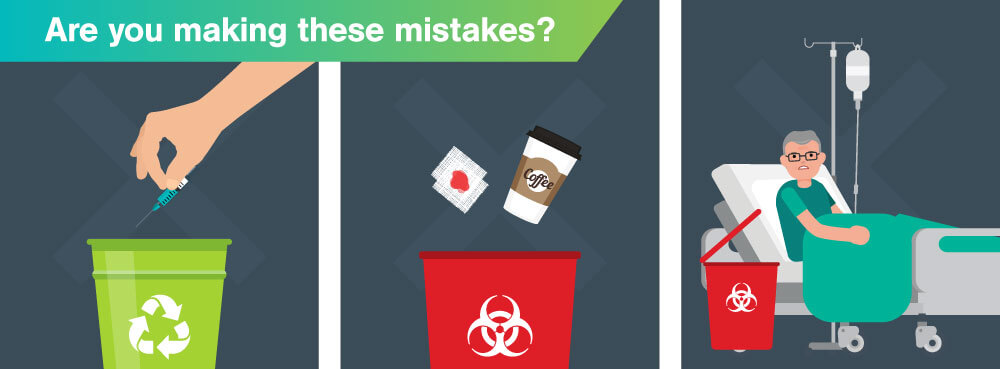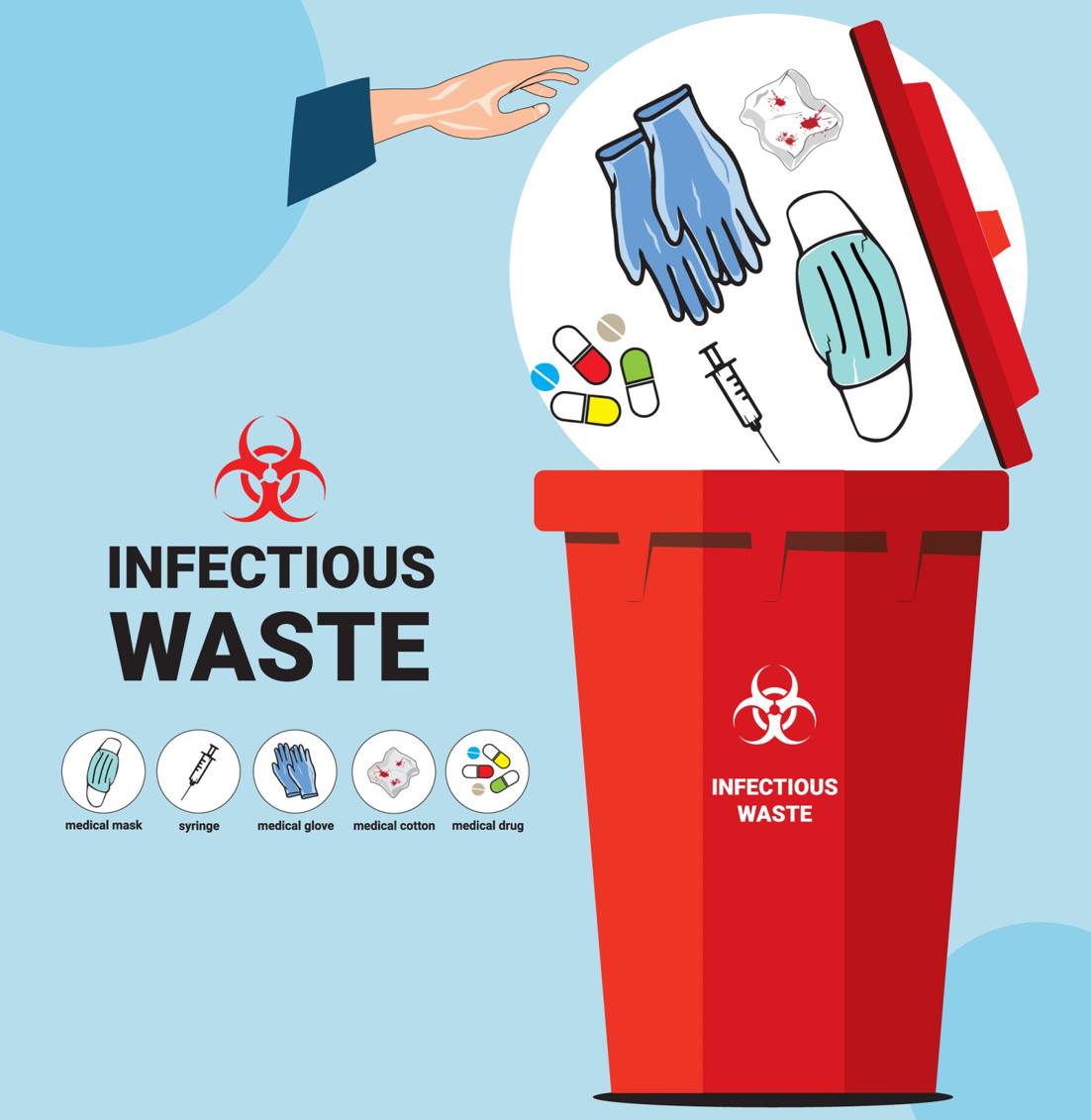Comprehensive Medical Waste Disposal Services: Ensuring a Healthy And Balanced Environment
Wiki Article
Compliance and Laws for Medical Waste Disposal
Compliance and laws for clinical waste disposal play an important duty in making certain the safety and well-being of both healthcare experts and the general public. Proper management of medical waste is vital to stop the spread of infections, shield the setting, and keep public wellness. These regulations encompass various aspects, including the classification and segregation of medical waste, proper storage and handling procedures, as well as transport and disposal approaches.Significance of Compliance
The value of conformity with regulations for clinical garbage disposal can not be overemphasized. Proper disposal of medical waste is critical for ensuring the safety and wellness of health care workers, patients, and the basic public. Clinical waste, which consists of products such as utilized needles, contaminated handwear covers, and biomedical waste, can posture significant health and wellness dangers if not handled and gotten rid of appropriately.Compliance with laws makes certain that medical waste is managed in such a way that lessens the capacity for exposure to dangerous substances and transmittable illness - medical waste removal service. It aids avoid the spread of infections, such as HIV, liver disease B and C, and other bloodborne virus. Compliance additionally plays an important role in securing the environment by avoiding contamination of water resources, soil, and air
Failing to follow laws can lead to extreme repercussions for medical care facilities, including fines, lawsuit, and damages to their track record. Additionally, non-compliance might compromise the health and wellness of medical care workers, individuals, and the area.
Compliance with laws for medical waste disposal calls for adherence to specific guidelines and procedures. These might include proper partition, product packaging, labeling, and storage space of medical waste. It likewise includes making use of approved disposal approaches, such as autoclaving, incineration, or landfilling, relying on the kind of waste.
Regulatory Agencies and Bodies
Regulatory agencies and bodies play a crucial role in supervising compliance with guidelines for medical garbage disposal. These companies are accountable for setting criteria, guidelines, and protocols to guarantee the risk-free and appropriate handling of medical waste. They enforce and monitor compliance to protect public health and the environment.One of one of the most noticeable governing firms in the USA is the Epa (EPA) The EPA is accountable for regulating the storage, transportation, therapy, and disposal of clinical waste. They establish standards for waste generators, carriers, and treatment facilities to adhere to, making sure that all required precautions are required to stop the spread of illness and contamination.
Another vital regulative body is the Occupational Security and Health Management (OSHA) OSHA sets standards and regulations to protect workers from job-related dangers, including those pertaining to medical waste. WasteX Medical Waste Disposal. They give standards for the risk-free handling and disposal of clinical waste to shield staff members in healthcare centers
In addition to these federal agencies, individual states likewise have their own regulative bodies that supervise clinical garbage disposal. These firms may have their very own particular laws and demands that must be complied with.

Classification and Partition of Clinical Waste
To guarantee correct administration of clinical waste, it is important to identify and segregate it according to established methods and guidelines. medical waste disposal service. Category and segregation play an important duty in minimizing the risk of infection, protecting the atmosphere, and making certain the safety of healthcare workers and the general publicClinical waste is identified right into various groups based upon its potential threat level. These categories include infectious waste, pathological waste, sharps waste, pharmaceutical waste, chemical waste, and radioactive waste. Each classification needs certain handling, disposal, transportation, and storage techniques to reduce the danger of direct exposure and contamination.
Segregation of medical waste includes separating different kinds of waste at the source. This procedure ensures that waste with various threat degrees is not blended, lowering the capacity for cross-contamination and making disposal procedures much more efficient. Proper partition is attained with making use of color-coded containers and labels, which aid health care workers and waste administration workers identify and handle each kind of waste appropriately.
In enhancement to category and segregation, medical care centers have to additionally stick to local, state, and government guidelines concerning clinical waste administration. These policies outline certain demands for storage, transportation, therapy, and final disposal of clinical waste, guaranteeing conformity and preserving public health and security.
Proper Storage Space and Dealing With Treatments
Correct storage space and dealing with procedures play a crucial role in making certain the certified and risk-free management of medical waste. Clinical waste, which includes items such as used syringes, infected gloves, and ran out medications, can posture significant health and environmental risks if not dealt with properly. Therefore, it is important for healthcare facilities and various other generators of medical waste to execute stringent storage and taking care of methods.
To start with, clinical waste ought to be saved in resilient, leak-proof containers that are particularly designed for this function. These containers need to be labeled with the global biohazard icon and the words "medical waste" to plainly show the contents. Furthermore, the containers need to be maintained safely near prevent any type of possible leak or spillage.
Additionally, it is essential to set apart different sorts of medical waste to stop cross-contamination. Sharps, such as scalpels and needles, should be kept in puncture-resistant containers to lessen the threat of injuries - WasteX Medical Waste Disposal. Chemical waste, such as disinfectants and solvents, ought to be stored individually from other kinds of medical waste to stop chain reactions or harmful direct exposures

Transportation and Disposal Approaches
Medical care facilities must make certain the risk-free transportation and correct disposal of their clinical waste to follow regulations and shield public health and wellness. Transportation and disposal approaches play an essential duty in stopping the spread of infectious conditions and lessening the environmental influence of medical waste.
To transport clinical waste, healthcare centers should make use of leak-proof and puncture-resistant containers that are labeled with the biohazard symbol. These containers should be securely sealed to avoid any type of leakage during transport. Additionally, medical care facilities must establish methods for the transportation process, consisting of using skilled employees and devoted automobiles.
Once the medical waste gets to the disposal center, it undergoes different approaches of treatment. One typical technique is incineration, which entails shedding the waste at heats to destroy pathogens and minimize the quantity of waste. Another technique is autoclaving, which utilizes heavy steam and stress to sterilize the waste. After treatment, the waste is typically sent to a garbage dump or a waste-to-energy center for last disposal.
It is essential for healthcare facilities to collaborate with licensed and allowed waste administration firms to guarantee appropriate transportation and disposal of medical waste. These companies have the know-how and sources to deal with medical waste safely and in compliance with her explanation regulations.
Verdict
In final thought, compliance with policies for medical waste disposal is of utmost value to make certain public health and security. In general, adherence to conformity and policies is essential to efficiently take care of medical waste.Clinical waste, which includes products such as used needles, polluted handwear covers, and biomedical waste, can position severe health dangers if not taken care of and disposed of correctly.
These groups include contagious waste, pathological waste, sharps waste, pharmaceutical waste, chemical waste, and contaminated waste.Partition of medical waste includes dividing different kinds of waste at the resource. Proper segregation is accomplished via the use of color-coded tags and containers, which aid healthcare workers and waste administration employees take care of each kind and identify of waste properly.
Chemical waste, such as solvents and disinfectants, ought to be kept independently from various other kinds of medical waste to avoid hazardous exposures or chemical reactions.
Report this wiki page